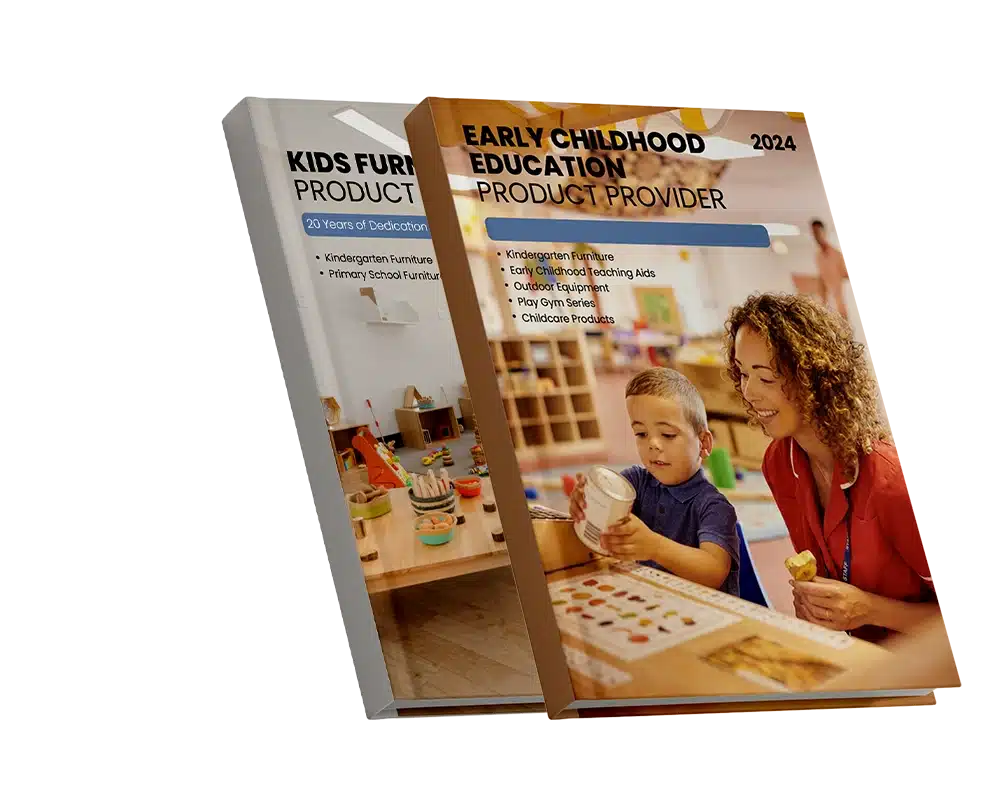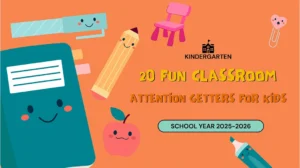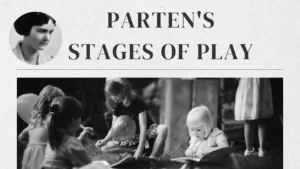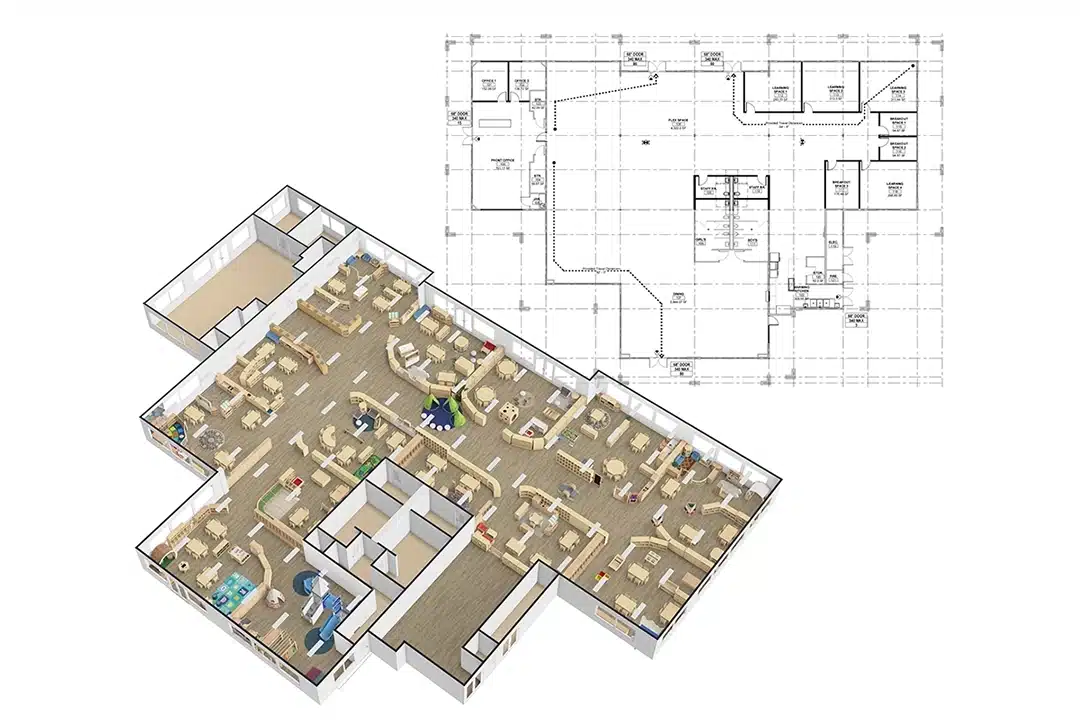Is your child playing near others but not quite with them? Do you notice them sharing toys without a clear plan or goal? Are you wondering if this behavior is normal—or even beneficial? If you’re a teacher or parent observing these interactions, you’re likely witnessing associative play in action.
Associative play is a foundational stage in child development, where children begin to interact by sharing, talking, and loosely playing together—without coordinating their actions toward a common goal. It’s a sign that a child is building social awareness and learning the rules of cooperation, setting the stage for deeper collaboration later on.
Children in this stage are developing crucial life skills—like communication, empathy, and negotiation—without even realizing it. Let’s explore associative play and why it’s such a game-changer in early education.

What is Associative Play?
Associative play refers to one of the six recognized stages of childhood play development, where children begin to actively engage with one another while maintaining independent play goals. This type of play usually appears around three, as toddlers become more socially aware and curious about their peers. It’s an essential bridge between parallel and cooperative play, encouraging children to begin practicing social skills, empathy, and communication—albeit in a loosely structured format.
While each child progresses through the stages of play at their own pace, associative play generally indicates a readiness to engage more meaningfully with others. It may start subtly—a child commenting on another’s toy or copying a peer’s building block arrangement—but it gradually evolves into complex interactions that lay the groundwork for lifelong social competence.

Characteristics of Associative Play
Understanding the nature of associative play helps parents and educators support it effectively. Here are the distinguishing traits:
- Verbal Interaction: Children frequently talk to each other during play, even if conversations seem random or unrelated to the activity.
- Shared Materials: Kids may not have a common goal, but they often share toys or space, leading to organic, unstructured collaboration.
- Lack of Assigned Roles: Unlike cooperative play, associative play doesn’t involve planning or assigning roles—each child acts independently.
- Observation and Imitation: Children often mirror actions, indicating they observe and learn socially.
- Emerging Social Awareness: There’s a clear interest in peers, evidenced by efforts to engage, comment, or play alongside others.
Associative play is less about outcomes and more about the experience—watching a peer, initiating interaction, and responding spontaneously to social cues.
Associative Play Age Range
Associative play typically surfaces between three and four, although it can appear earlier or later depending on the child’s environment and personality. Children must first develop certain foundational skills before they can fully engage in this kind of play, including:
- Basic language ability
- Awareness of others
- Some impulse control
- Ability to share attention and space
It’s also influenced by the opportunities children have to interact with peers. Those in daycare or with siblings may begin associative play sooner due to more frequent social interaction. Meanwhile, children who primarily engage in solitary or parallel play might take more time to transition.
As parents observe their child moving through these stages, it’s important to recognize that associative play is not a strict milestone. It’s a fluid process in which development, environment, and individual temperament interact.

Benefits of Associative Play for Preschoolers
Associative play is much more than children simply playing side-by-side while chatting. It’s a critical phase that nurtures a variety of essential skills. Below are the most impactful benefits, broken down by specific developmental domains:
1. Social skill development
Incorporating associate play into daily routines helps children learn to share, cooperate, and communicate more effectively. These interactions nurture empathy, patience, and social awareness—critical skills for long-term success in group environments.
2. Language communication skills
Children expand their vocabulary and learn how to express themselves through casual conversations during play. This linguistic growth is a hallmark of associative play skills, reinforcing how verbal interaction shapes learning.
3. Cognitive growth
Observing, imitating, and reacting to peers boosts memory retention, reasoning, and attention span. These skills often emerge when children are deeply immersed in associative play preschool scenarios.
4. Improve creativity
Engaging in fantasy roles or open-ended activities like building or storytelling helps children stretch their imaginations. Many associative play examples involve dress-up corners, make-believe restaurants, or constructing imaginative cities with blocks.
5. Problem solving
Disagreements or conflicting ideas during associate play moments teach children to negotiate, find compromises, and consider other perspectives.
6. Encourage motor skill development
Whether passing a ball or using scissors together, physical coordination improves through shared play. These motor refinements are subtle but impactful aspects of associative play in early childhood development.
7. Boost confidence
Children feel more secure in their social identities when interacting with peers. Small wins, like having someone laugh at their joke or ask to share a toy, contribute to emotional resilience.

6 Stages of Early Childhood Play Development
Understanding where associative play fits within the broader childhood development context helps parents and educators better support each stage. These stages, first described by Mildred Parten, outline how children progress socially through different kinds of play:
Free time play (0 – 3 months)
Also called unoccupied play, this stage involves random movements without purpose. For example, newborns might wave their arms or kick their legs, simply exploring their physical capabilities.
Solo play (3 months – 2 years)
Here, children play alone, focusing solely on their activities. This stage is crucial for fostering concentration, creativity, and independence. It’s not that they’re uninterested in others—they’re simply more engaged with their exploration.
Spectator play (2 years)
Also known as onlooker play, this phase involves watching other children play without joining in. It’s a learning stage in which children observe social norms, toy usage, and potential outcomes before actively participating.
Parallel play (2 years old and up)
In parallel play, children play side by side with similar toys without much interaction. They might mimic each other but don’t collaborate or share goals. It’s the precursor to associative play and a sign that children are becoming socially aware.
Associative play (3 – 4 years old and up)
This crucial stage features shared space, toys, and casual conversation. A common definition of associative play includes interaction without cooperation, a key distinction from later stages.
Collaborative play (4 years old and up)
Also known as cooperative play, this stage is when children begin to plan, assign roles, and work toward common objectives. It includes structured games, team activities, and complex scenarios with shared outcomes.

How to Encourage Associative Play?
To encourage associative play, create a flexible, child-led environment where kids can engage, share, and communicate naturally. Provide diverse play opportunities, but avoid over-directing.
1. Create a supportive play environment
Children need space and permission to explore and play socially. A supportive environment refers not only to physical space but also to the emotional and social tone set by adults. Quiet encouragement, positive reinforcement, and visible acceptance of diverse play styles make a difference.
2. Active participation
Children learn best by example. Adults should model associative play behaviors subtly rather than taking over the play.
- Prompt sharing and communication: Suggest ideas like, “You could give her the blue block after you use it,” to gently guide interaction.
- Join in occasionally: Play alongside children to demonstrate cooperation, then slowly step back to let them take control.
3. Provide toys suitable for social play
Toys are tools; some are far more conducive to associative play than others. Ideal choices include:
- Building blocks
- Dollhouses
- Play kitchens
- Animal figurines
- Dress-up clothes
- Art supplies
- Sand and water tables
- Puzzles with multiple pieces but no competitive goal
These toys encourage storytelling, sharing, and side-by-side creativity—without enforcing strict rules or outcomes.


4. Provide diverse play experiences
Introduce your child to a variety of associative play preschool situations. The more settings and personalities they experience, the stronger their adaptive and social abilities will be.
- Rotate toys and activities weekly
- Organize themed playdates with small groups
- Include children of various ages to promote mentorship and flexibility
5. Don’t over-involve
The beauty of associative play is its spontaneity. Adults should facilitate, not direct. Over-involvement can shift the dynamic into adult-led activities, reducing peer interaction and stunting organic social development.

Create the Right Environment for Associative Play
Setting the stage for successful associative play in early childhood begins long before toys are introduced. Environment influences mood, energy, and engagement levels.
Step 1: Choose an open layout
Avoid cramped, cluttered spaces. Kids need room to move, gather, and shift focus naturally.
Step 2: Offer small-group settings
Two to four children create the ideal dynamic for associative play. Too many can overwhelm; too few may not stimulate social engagement.
Step 3: Add soft, flexible furnishings
Comfortable seating, floor cushions, and rugs make play feel safe and inviting, encouraging children to stay longer and interact more freely.
Step 4: Use visual cues
Signs, color-coded zones, or themed areas help children understand where and how different types of play can happen, promoting self-directed interaction.
Step 5: Minimize screen exposure
Screens often lead to solitary behavior. During playtime, remove digital distractions to encourage full attention toward peers.

Fun Activities to Support Associative Play
- Sensory play
Sand tables, water bins, and textured materials invite children to explore together, share sensations, and react to each other’s discoveries—stimulating both sensory and associative play skills. - Art activities
Painting, coloring, and collage-making encourage discussion, imitation, and shared creativity. Children learn to express themselves while responding to the input of peers—hallmarks of associative play in early childhood. - Pretend play
Dress-up stations and role-play corners allow children to invent roles and storylines. They engage in conversations, mimic adults, and adjust their narratives to include others, organically demonstrating the definition of associative play. - Playgroups
Structured yet informal, playgroups bring together children from different backgrounds. Regular exposure in these settings can elevate timid children into confident social players through modeled associate play. - Outdoor activities
Climbing structures, balance beams, and tricycles encourage physical interaction. Shared outdoor space naturally leads to conversation, imitation, and cooperative tasks.
Associative Play vs Cooperative Play
| Feature | Associative Play | Cooperative Play |
|---|---|---|
| Interaction level | Children interact, share materials, and talk, but play independently | Children play together toward a shared goal or outcome |
| Organization | Unstructured and loosely connected play | Structured play with agreed-upon rules or plans |
| Common age | Typically 3 to 4 years old | Typically begins around 4 years old and up |
| Examples | Two kids sharing blocks but building separately | Kids building a single tower together with assigned tasks |
| Skills developed | Language, social awareness, sharing, observation | Teamwork, collaboration, rule-following, advanced communication |
| Parent role | Minimal guidance needed; children explore interaction | Occasional supervision or facilitation to manage roles and goals |
Associative Play: Common Challenges and Coping Techniques
While associative play offers tremendous developmental benefits, it doesn’t always come naturally. Understanding the potential challenges and how to address them can ensure smoother social growth for your child.
- Challenge 1: Shyness or Social Anxiety
Some children may hesitate to engage with others, preferring solitary or parallel play.
Coping Technique:
Start with familiar peers in low-pressure environments. Arrange short playdates and offer reassuring phrases like, “It’s okay to just watch for a bit,” to reduce stress. Gradually nudge them into interaction through shared activities. - Challenge 2: Dominating behavior
Children may try to control play by not sharing or bossing others around.
Coping Technique:
Gently reinforce the idea of turn-taking and fairness. Use positive phrasing such as, “Let’s see how we can both play with this,” and model cooperative behavior. - Challenge 3: Inability to communicate clearly
Limited language skills can make it hard for some children to express ideas or respond appropriately.
Coping Technique:
Provide language support by modeling simple phrases they can use: “Can I play too?” or “Let’s build together.” Books and songs about sharing and friendship can also reinforce these ideas. - Challenge 4: Sensory sensitivities
Loud noises or chaotic environments can overwhelm some children and make associative play in early childhood difficult.
Coping Technique:
Gently reinforce the idea of turn-taking and fairness. Use positive phrasing such as, “Let’s see how we can play with this,” and model cooperative behavior. - Challenge 5: Difficulty adapting to different personalities
Children may clash due to differences in play styles or temperaments.
Coping Technique:
Rotate playmates to expose your child to a variety of social dynamics. After play, reflect with your child: “What did you like about playing with Alex?” This promotes self-awareness and empathy.

The Role of Parents and Caregivers in Promoting Associative Play
Adults are the silent architects of associative play in early childhood. Here’s how they can nurture this form of play without overt control:
- Observe and interpret: Watch for signs that your child is ready for more interactive play—frequent observation, copying peers, or speaking during play are positive indicators.
- Model behavior: Children learn by example. Demonstrating how to ask for a toy politely or how to join a game sets a strong foundation.
- Provide consistent opportunities: Regularly scheduled playdates, sibling interactions, and participation in group settings like libraries or community centers help children practice.
- Balance routine with flexibility
While structure is important, children thrive when given freedom within a predictable routine. Designate daily time for associative play but allow that time to evolve based on the child’s interests. - Collaborate with educators
Teachers and caregivers in daycare or preschool settings witness children’s social development up close. Regularly check in with them to understand how your child is engaging and what areas may need support.
FAQs
- How do I know if my child is engaged in associative play?
Look for signs like verbal interaction during play, shared toys, imitation of other children’s actions, and spontaneous group gathering around an activity. - Is associative play necessary before cooperative play?
Yes, associative play acts as a stepping stone. It teaches children how to interact in unstructured settings, which is vital for more complex, goal-oriented cooperative play later on. - Can associative play happen with only two children?
Absolutely. Even two children engaging in independent but interactive play—like building with blocks and commenting on each other’s work—can exhibit associative play skills. - What if my child prefers playing alone?
That’s completely normal too. Solitary play has its own benefits. Continue offering opportunities for social play and let your child move through stages at their own pace. - Does screen time affect associative play development?
Yes, excessive screen time can limit real-world social interaction. Balancing digital activities with plenty of face-to-face play is crucial for developing strong associative play skills. - Can associative play occur with children of different ages?
Yes, children can engage in associative play with peers of varying ages, which can enhance learning and social development. - Is associative play beneficial for children with developmental delays?
Yes, associative play can help children with developmental delays improve their social and communication skills in a natural setting.
Conclusion
Associative play is far more than idle chatter and scattered play. It’s a vital stage that bridges the gap between independent exploration and meaningful social interaction. By understanding the associative play definition, recognizing the signs, and creating supportive environments, caregivers and educators can empower children to build foundational skills for life.
From shared crayons and sandbox chats to mimicked storylines and spontaneous games, associative play in early childhood lays the groundwork for empathy, communication, and confidence. Don’t rush the process—observe, support, and let your child flourish in their unique rhythm of growth.













